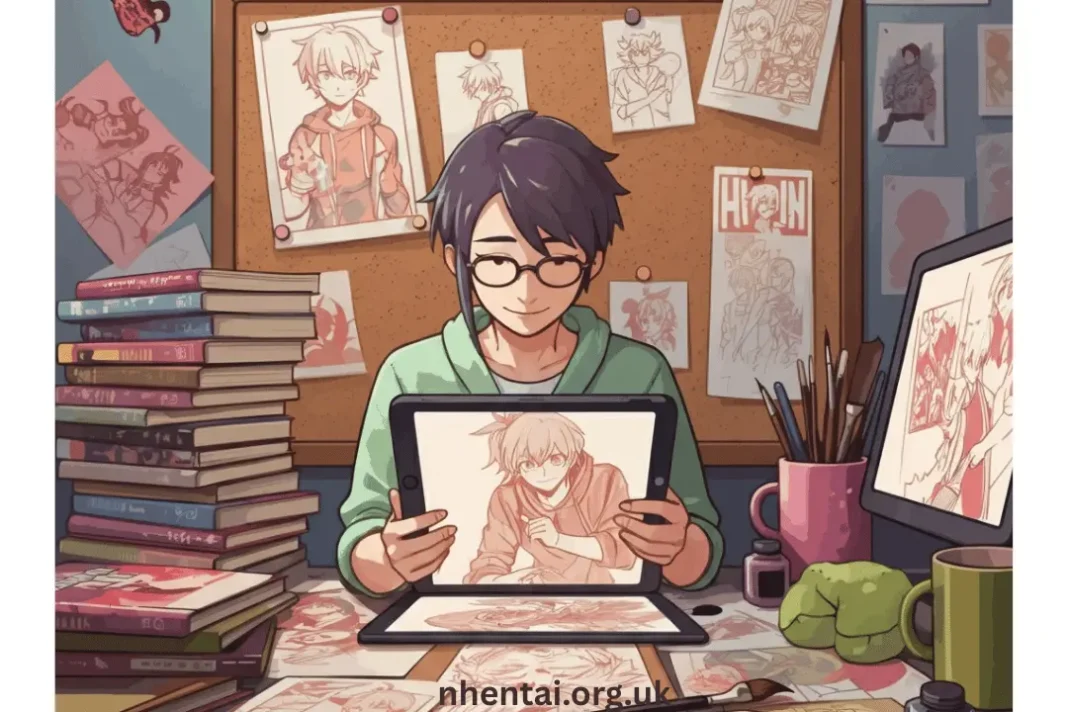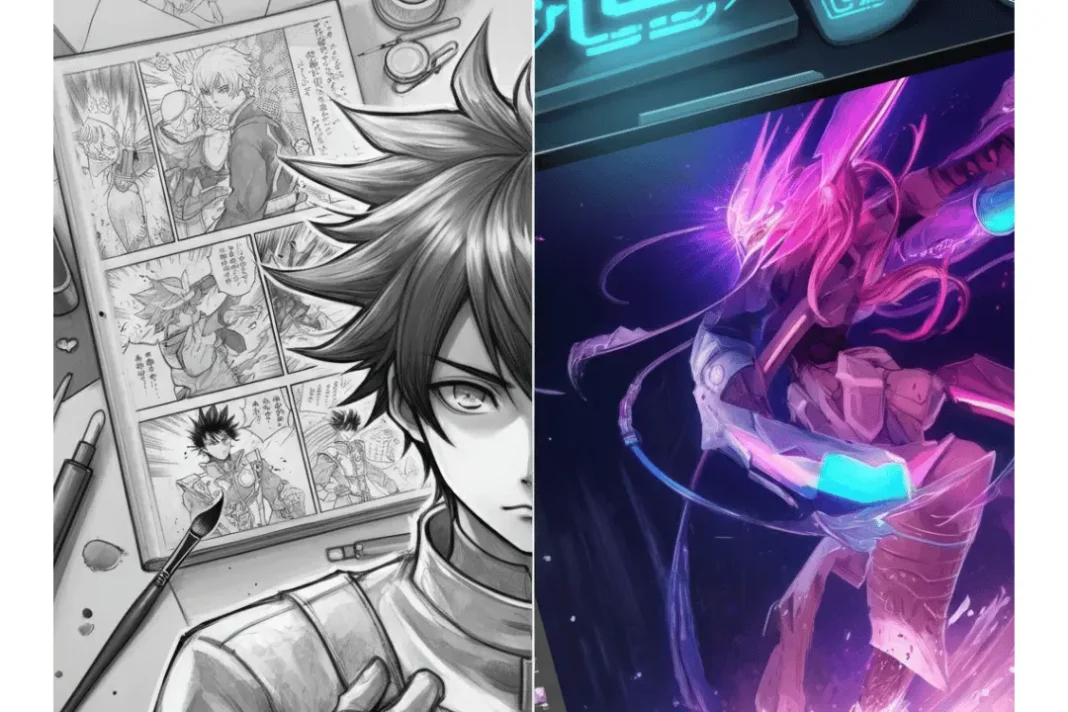The manga industry stands at a fascinating crossroads where centuries-old storytelling traditions meet cutting-edge artificial intelligence and digital innovation. While manga as a medium has always embraced technological advancement, the emergence of AI-powered tools and sophisticated digital platforms is creating unprecedented opportunities for artists, particularly in specialized genres like hentai manga.
Contents
- 1 The Evolution of Manga Creation: From Ink to Algorithms
- 2 AI-Powered Creation Tools: The New Artist’s Toolkit
- 3 Digital Platforms Transforming Distribution and Creation
- 4 Benefits and Creative Possibilities
- 5 Challenges and Controversies in the Digital Age
- 6 Real-World Applications and Case Studies
- 7 The Future Landscape of Digital Manga Creation
- 8 Conclusion: Embracing Change While Preserving Artistry
The Evolution of Manga Creation: From Ink to Algorithms
Traditional manga creation has long been a labor-intensive process requiring exceptional artistic skill, storytelling ability, and tremendous patience. Artists would spend countless hours sketching panels by hand, using specialized pens, screentones, and correction fluid to achieve the distinctive black-and-white aesthetic that defines the medium. The process typically involved multiple stages: rough sketches, detailed penciling, inking, tone application, and lettering—each requiring specialized tools and years of practice to master.
The transition to digital began in the late 1990s and early 2000s, with software like Adobe Photoshop and specialized programs like Manga Studio (now Clip Studio Paint) offering artists new possibilities. These tools introduced efficiency gains through features like digital screentones, layers, and undo functions, but still required significant artistic expertise and time investment.
Today’s AI revolution represents a quantum leap beyond these incremental improvements. We’re witnessing the emergence of tools that can assist with everything from initial concept generation to final production, fundamentally changing how manga creators approach their craft.
AI-Powered Creation Tools: The New Artist’s Toolkit
Several AI platforms are making significant inroads into manga and comic creation. Stable Diffusion, Midjourney, and DALL-E have demonstrated remarkable capabilities in generating anime-style artwork, while specialized tools like Waifu Diffusion and NovelAI focus specifically on anime and manga aesthetics.
For hentai manga creators, these tools offer particular advantages. The genre’s emphasis on specific character archetypes, poses, and visual elements aligns well with AI training data, allowing for consistent character generation and pose reference creation. Artists can now generate reference materials, experiment with compositions, and even create full character sheets in minutes rather than hours.
Clip Studio Paint has integrated AI features that can automatically colorize line art, suggest panel layouts, and even generate background elements. Meanwhile, platforms like RunwayML offer video-to-image generation that can help artists visualize movement and dynamic poses—crucial elements in hentai manga where body language and positioning carry significant narrative weight.
Digital Platforms Transforming Distribution and Creation
Beyond creation tools, digital platforms are revolutionizing how hentai manga reaches audiences. Services like Pixiv, DLsite, and Fakku have created direct pathways between creators and consumers, eliminating traditional publishing gatekeepers. These platforms provide creators with analytics, direct feedback, and monetization options that were previously unavailable.
The rise of webtoon formats and vertical scrolling has also influenced hentai manga creation. Digital-first platforms encourage experimentation with panel layouts and pacing that would be impossible in print format. AI tools can assist with format optimization, automatically adjusting artwork for different screen sizes and reading experiences.
Benefits and Creative Possibilities
The integration of AI and digital tools offers numerous advantages for hentai manga creators. Speed is perhaps the most obvious benefit—artists can iterate quickly on concepts, generate multiple variations of scenes, and focus more time on storytelling and refinement rather than technical execution.
AI tools also democratize certain aspects of creation. Artists who excel at storytelling but struggle with specific technical elements like backgrounds or anatomy can use AI assistance to overcome these barriers. This is particularly valuable in hentai manga, where anatomical accuracy and environmental detail significantly impact the reader’s experience.
For established artists, AI serves as a powerful enhancement tool. It can generate initial sketches that artists refine, provide pose references for complex scenes, or help with consistency across long-form works. Some creators are experimenting with AI-generated variations of their own art style, creating unique hybrid approaches that blend human creativity with machine efficiency.
Challenges and Controversies in the Digital Age
The integration of AI into manga creation isn’t without significant challenges and ethical considerations. The most prominent concern involves training data and copyright issues. Many AI models have been trained on copyrighted manga and artwork without explicit permission, raising questions about intellectual property rights and fair compensation for original creators.
Within the hentai manga community specifically, these concerns are amplified by the niche nature of the content and the potential for AI to replicate specific artists’ styles without attribution. Some artists worry about being replaced entirely, while others fear that AI-generated content will flood the market and devalue human-created work.
Quality control presents another challenge. While AI can generate impressive results, it often struggles with consistency across panels, maintaining character likeness throughout a story, and understanding the subtle emotional nuances that make manga compelling. In hentai manga, where character expression and body language are crucial for conveying intimacy and emotion, these limitations become particularly apparent.
There are also broader concerns about content moderation and ethical boundaries. AI tools can potentially generate problematic content more easily than traditional methods, requiring careful consideration of guidelines and safeguards.
Real-World Applications and Case Studies
Despite these challenges, many hentai manga creators are successfully integrating AI tools into their workflows. Some artists use AI for initial brainstorming, generating multiple character design options or scene compositions before refining their favorites manually. Others employ AI for time-consuming elements like detailed backgrounds or crowd scenes, freeing up time for more critical story elements.
Independent creators are using AI to overcome resource limitations, creating professional-quality work without large teams or extensive technical backgrounds. This has led to an explosion of diverse voices and styles in the hentai manga space, as barriers to entry continue to lower.
Professional studios are beginning to incorporate AI into their production pipelines, using it for tasks like in-betweening, coloring assistance, and asset generation. While human artists remain central to the creative process, AI increasingly handles routine technical tasks.
The Future Landscape of Digital Manga Creation
Looking ahead, the relationship between AI and manga creation will likely become even more sophisticated. We’re beginning to see AI tools that can maintain character consistency across multiple panels, understand basic storytelling principles, and even suggest narrative improvements.
Future developments may include AI assistants capable of collaborative storytelling, tools that can automatically adapt content for different formats and platforms, and even AI that can help with localization and cultural adaptation for international markets.
The hentai manga industry, with its digital-first approach and tech-savvy audience, is well-positioned to benefit from these advances. As AI tools become more sophisticated and ethical frameworks develop, we’ll likely see new hybrid creation methods that combine human creativity with AI efficiency in unprecedented ways.
However, the future will also require careful navigation of ethical considerations, copyright issues, and the balance between technological enhancement and human artistry. The most successful approaches will likely be those that use AI to augment rather than replace human creativity, preserving the emotional depth and cultural authenticity that make manga such a powerful medium.
Conclusion: Embracing Change While Preserving Artistry
The revolution in manga creation through AI and digital tools represents both tremendous opportunity and significant challenge. For hentai manga creators, these technologies offer unprecedented creative possibilities, efficiency gains, and new pathways to reach audiences.
Success in this evolving landscape will require adapting to new tools while maintaining the human elements that make manga compelling: emotional storytelling, cultural authenticity, and artistic vision. The future belongs to creators who can harness the power of AI while preserving the heart and soul that readers connect with.
As we move forward, the manga industry—including its most niche corners—must thoughtfully integrate these powerful new tools while addressing legitimate concerns about ethics, quality, and artistic integrity. The result promises to be a more diverse, accessible, and creatively rich medium that honors its traditional roots while embracing digital innovation.
You may also read: The Evolution of Hentai Comics: From Print to Digital Masterpieces
For more info visit Nhentai


